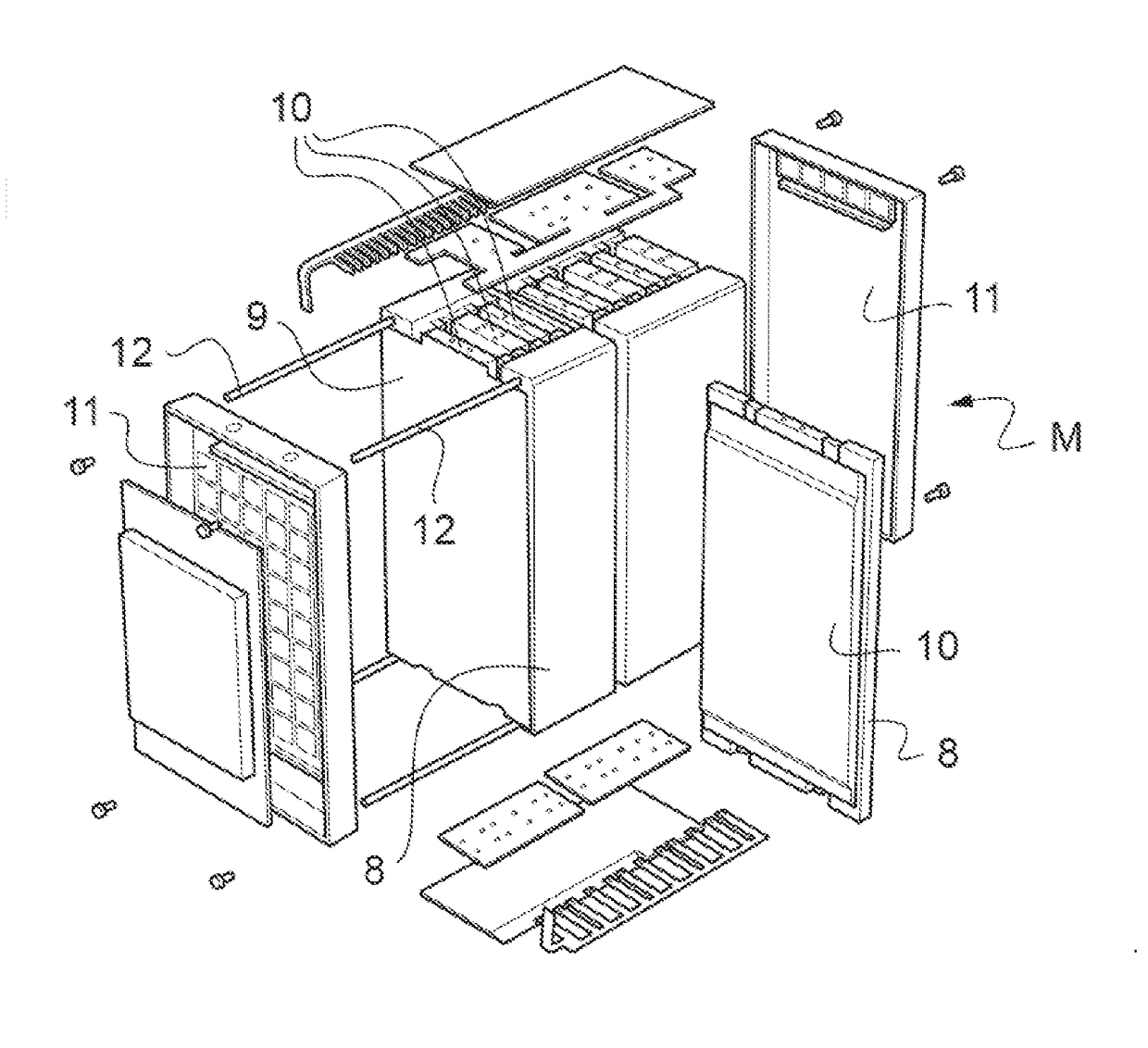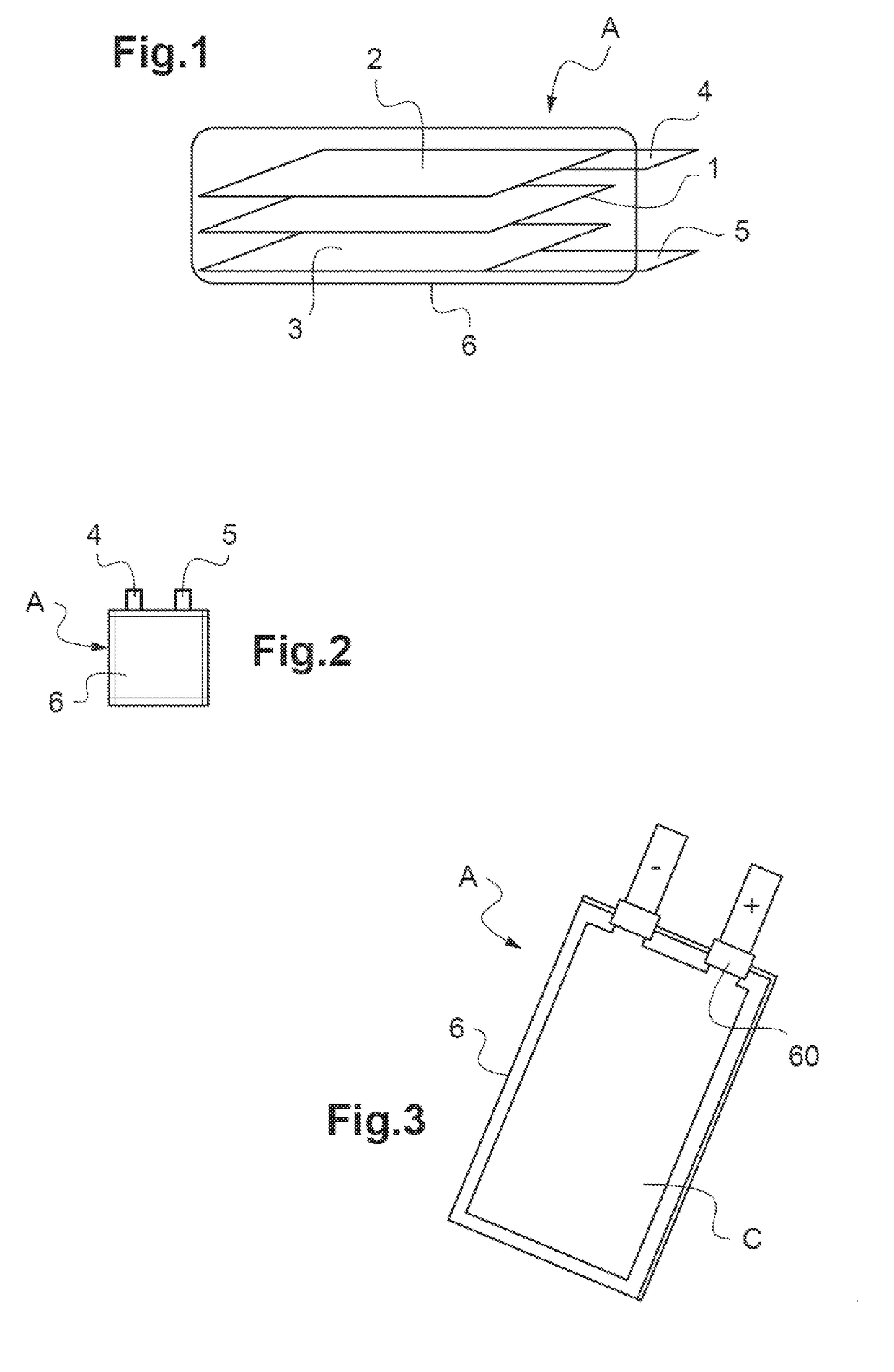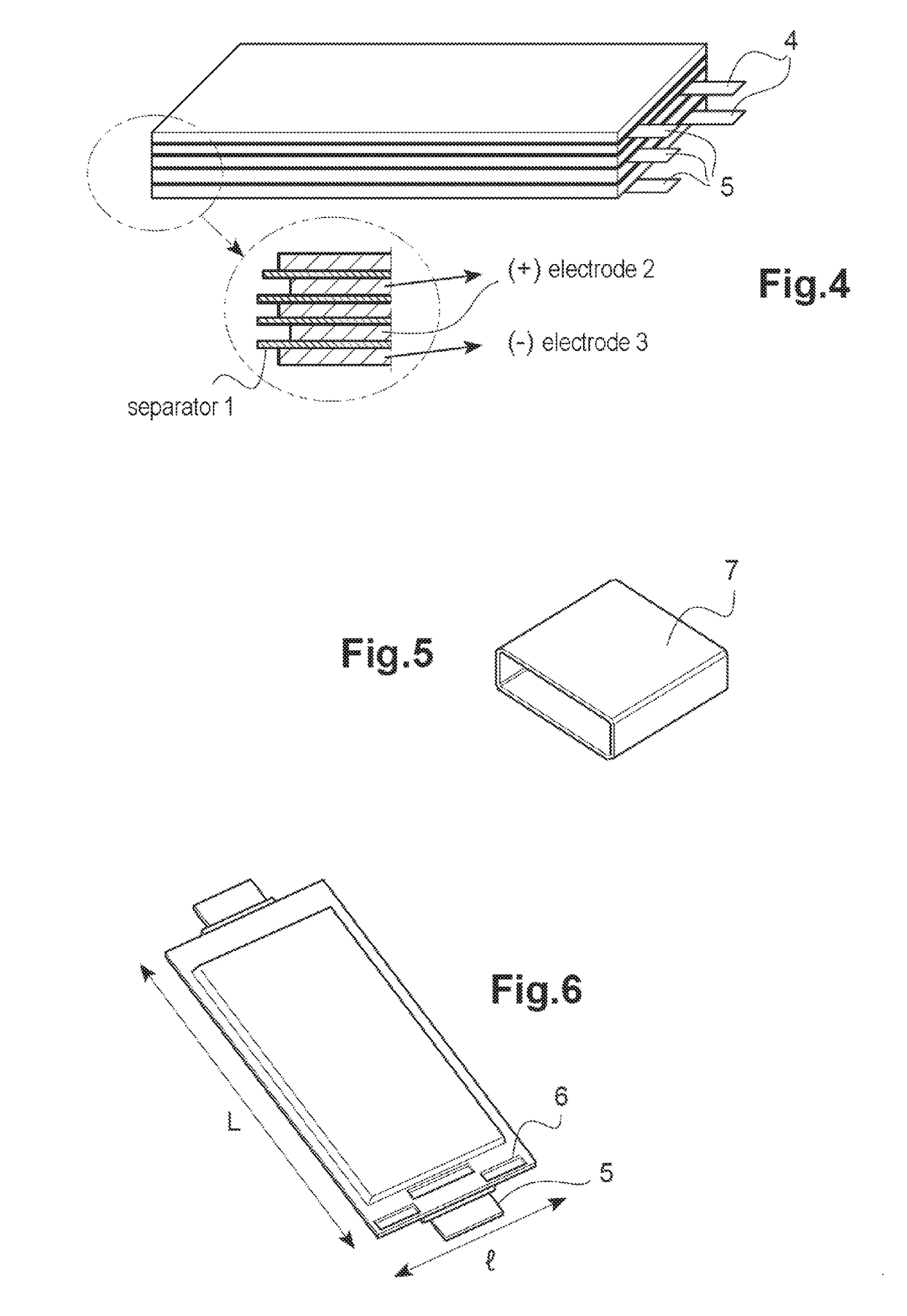High-capacity stacked-electrode metal-ion accumulator capable of delivering high power
a metal-ion accumulator, high-capacity technology, applied in the direction of cell components, final product manufacturing, sustainable manufacturing/processing, etc., can solve the problems of reducing affecting the efficiency of the electrochemical generator, so as to achieve the effect of reducing mechanical stresses in the thickness of the electrode of higher porosity, reducing the internal assembly, and improving the energy density per unit volum
- Summary
- Abstract
- Description
- Claims
- Application Information
AI Technical Summary
Benefits of technology
Problems solved by technology
Method used
Image
Examples
Embodiment Construction
[0132]Other advantages and characteristics of the invention will be more apparent from a perusal of the detailed description of examples of embodiment of the invention, provided by way of non-limiting illustration, with reference to the following drawings, in which:
[0133]FIG. 1 is a schematic exploded perspective view showing the different elements of a lithium-ion accumulator,
[0134]FIG. 2 is a face-on view showing a lithium-ion accumulator with its flexible shell according to the prior art,
[0135]FIG. 3 is a perspective view of an example of a lithium-ion accumulator according to the prior art with its flexible shell;
[0136]FIG. 4 is a perspective view of a stacked-electrode prismatic lithium-ion accumulator according to the prior art;
[0137]FIG. 5 is a perspective view showing a rigid casing to house a prismatic accumulator according to FIG. 5;
[0138]FIG. 6 is a perspective view of another example of a lithium-ion accumulator according to the prior art with its flexible shell, before ...
PUM
| Property | Measurement | Unit |
|---|---|---|
| porosity | aaaaa | aaaaa |
| porosity | aaaaa | aaaaa |
| porosity | aaaaa | aaaaa |
Abstract
Description
Claims
Application Information
 Login to View More
Login to View More - R&D
- Intellectual Property
- Life Sciences
- Materials
- Tech Scout
- Unparalleled Data Quality
- Higher Quality Content
- 60% Fewer Hallucinations
Browse by: Latest US Patents, China's latest patents, Technical Efficacy Thesaurus, Application Domain, Technology Topic, Popular Technical Reports.
© 2025 PatSnap. All rights reserved.Legal|Privacy policy|Modern Slavery Act Transparency Statement|Sitemap|About US| Contact US: help@patsnap.com



